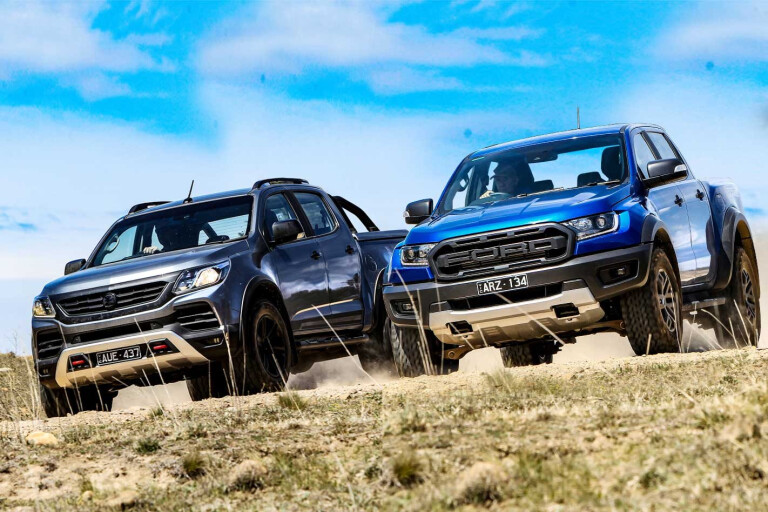
DUAL-CAB 4x4 utes are designed for a wide variety of potential roles including as a work truck, farm vehicle, family transport, tow rig or recreational 4x4.
The fact today’s dual-cab utes can fulfil so many roles is the key reason why they are the top sellers in today’s new-car market. At the same time, this ‘all-things-to-all people’ approach means there’s always compromise in dual-cab design as manufacturers try to build one ute that can do everything.
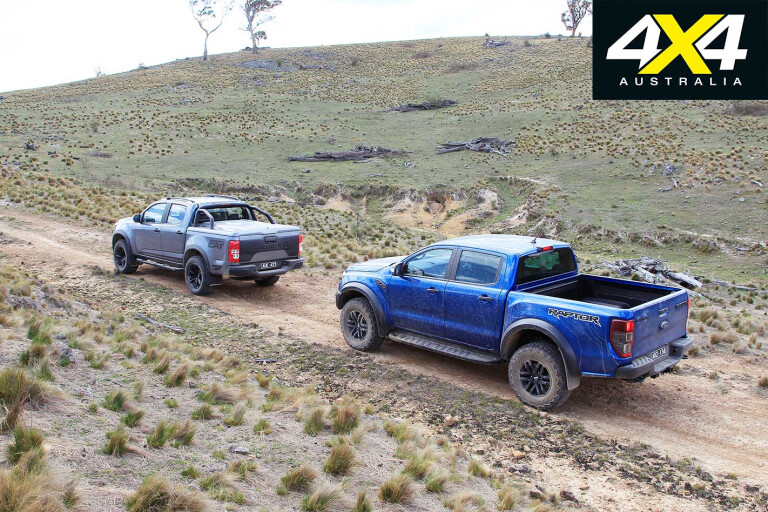
Many ute buyers address this multipurpose, compromised approach by adding accessories or modifying their vehicle so it’s better at what they want it to do. This is what Ford Performance and Holden Special Vehicles (HSV) have done here, namely built a ute that’s more specialised in its design intent.
Both of these utes can loosely be called ‘sports’ utes, but the sporty bit is nothing to do with engine performance, rather chassis enhancement. Ford’s Raptor is unashamedly designed for superior off-road performance, while HSV’s SportsCat is all about improving off-road performance and on-road dynamics.
In many ways they are quite different, but at the same time similar, so how do they compare? Or is it a matter of contrast? We line them up to find out.
HSV Colorado SportsCat - More than meets the eye
In creating the SportsCat, HSV’s engineers have done much more than just add new wheels, bigger tyres and a suspension lift.

WHAT you see here is the HSV Colorado SportsCat, which in some ways is unfortunate. What we would have liked for this comparison is the more expensive and more enhanced SportsCat+, but that wasn’t to be; through no fault of HSV, mind you.
Still, the SportsCat has the core engineering of the SportsCat+, which adds more kit, the best being race-spec front brakes. Plus, we have previously tested a SportsCat+, so we have that experience to call on.
Powertrain & Performance
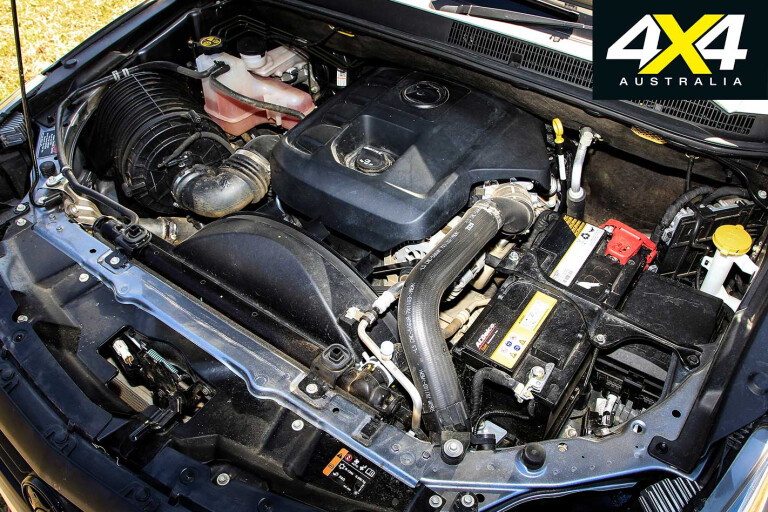
BOTH SportsCat models feature a standard Colorado powertrain, namely a VM-Motori 2.8-litre four-cylinder diesel backed by a GM six-speed automatic. Buyers also have the option of a six-speed manual in both models.
If the standard powertrain sounds underwhelming then you’re probably mistaken, as the 500Nm-strong engine gets on with the job nicely and is helped in its cause by a very proactive and sporty automatic gearbox.
The taller overall gearing, brought about by the SportsCat’s bigger tyres and the marginal increase in aero drag from what is a wider and taller vehicle, knocks a little off the performance compared to a stock Colorado. Even so, the SportsCat is an even match for the Raptor in straight-line speed, despite the latter’s 10-speed automatic and marginally more powerful engine.

For its mid-life 2017 revamp, the Colorado’s powertrain gained newfound refinement: the engine is smoother and quieter, and the gearbox is slicker shifting than in its original iteration. While this refinement upgrade is also evident with the SportsCat, the powertrain of the Raptor takes refinement to another level.
Drive the SportsCat in isolation and it feels fine, but drive it after getting out of the Raptor and it sounds and feels somewhat gruff.
On-road ride & Handling

IN CREATING the SportsCat, HSV’s engineers carried out significant modifications to the chassis of a standard Colorado, the most obvious of which – the taller and wider tyres and front ride-height increase – were aimed at improving the SportsCat off-road.
Less obvious are the changes that make the SportsCat better on-road, which start with a 30mm wider track (via wheel offset), firmer front springs and MTV dampers all ’round. HSV engineers also braced the top mounts for the front springs and dampers.
The standard pressed-steel top mounts for the front ‘struts’ are welded to the chassis rails behind the struts, but they’re effectively open at the front. This can introduce some flex, especially given the increased loads induced by the wider track and firmer springs and dampers.
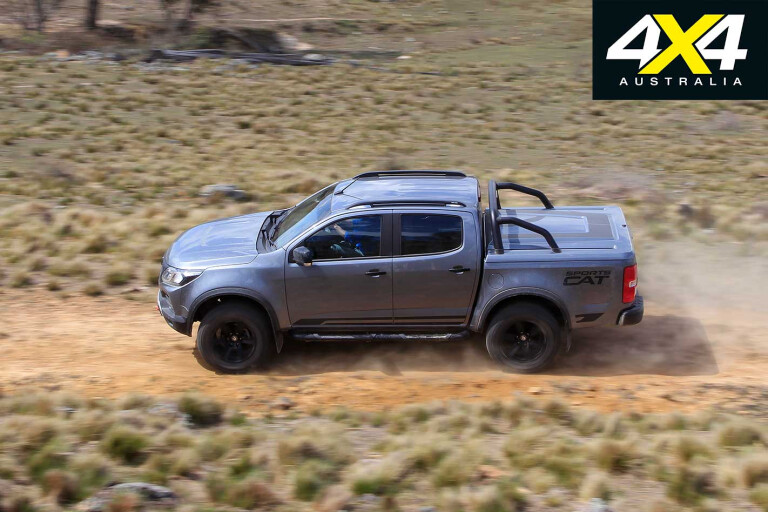
What HSV has done is brace the front of the strut top-mount back to the chassis via a steel tube looped up and around the strut, which helps eliminate flex in this critical area and thus achieve better suspension control.
Given the changes to the ride height, the track, and the wheel and tyre package, HSV engineers have also retuned the Electronic Stability Control. The end result of all this is that, despite the extra ride height, the SportsCat is more dynamically engaging on-road – the faster you drive it the better it feels.
Point the SportsCat down a winding road and it certainly provides sharper and more secure handling than the comparatively soft and less precise Raptor. Excellent feel, too, from the SportsCat’s electric power steering, which makes low-speed manoeuvring effortless, but firms up the weighting nicely at highway speeds.
Off-road

MOST of the SportsCat’s superior off-road prowess compared to a standard Colorado comes from its bigger tyres (285/60R18s versus 265/60R18s), which give a nominal 12mm increase in ride height – but more like 20mm due to the fact that actual tyre sizes don’t necessarily correlate exactly to theoretic tyre size. In addition, the new springs provide an additional 25mm of lift at the front end for even more much needed ground clearance.
Unfortunately the SportsCat’s wheel travel (like the Colorado) isn’t anything special, and the stiffer front springs reduce travel further. Like the standard Colorado there’s no rear locker, but electronic traction control is very effective; something we have noted previously with the Colorado’s MY17 upgrade. As a result of this the HSV SportsCat will comfortably go places off-road that a stock Colorado won’t, but in overall off-road ability the Raptor takes things to a new level.
Cabin & Accommodation

CLIMB aboard the SportsCat and you’re greeted by a flash interior that includes leather- and suede-trimmed seats complete with distinctive red stitching. The sports-style front seats are heated, comfortable and supportive, but there’s no steering wheel reach adjustment for the driver. Rear-seat passengers do well in the SportsCat, but, like the standard models they’re derived from, there isn’t quite as much legroom as there is in the back of the Raptor.
What you get
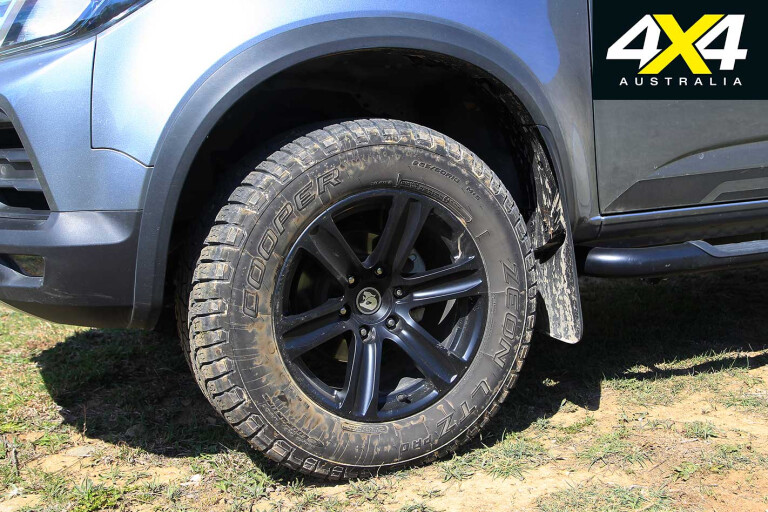
THE SPORTSCAT and SportsCat+ come with either a six-speed manual or a six-speed automatic. Standard equipment on both includes leather/suede trim, heated front sports seats (with electric adjust for the driver), sat-nav, auto headlights and wipers, Apple CarPlay and Android Auto, and a rear-view camera. Safety kit runs to seven airbags, tyre pressure monitoring, lane-departure warning and forward-collision alert. Other equipment includes LED DRLs and tail-lights, two heavy-duty front recovery hooks, soft-open tailgate, and a lockable hard tonneau.
The SportsCat is listed at $62,990 (automatic) while an additional $6K will get you into the SportsCat+, which adds bigger front brake rotors, four-piston AP Racing calipers, and a rear swaybar that automatically decouples when you engage low range. The SportsCat+ also comes with the optional SupaShock remote-reservoir dampers for a further $3600.
Practicalities
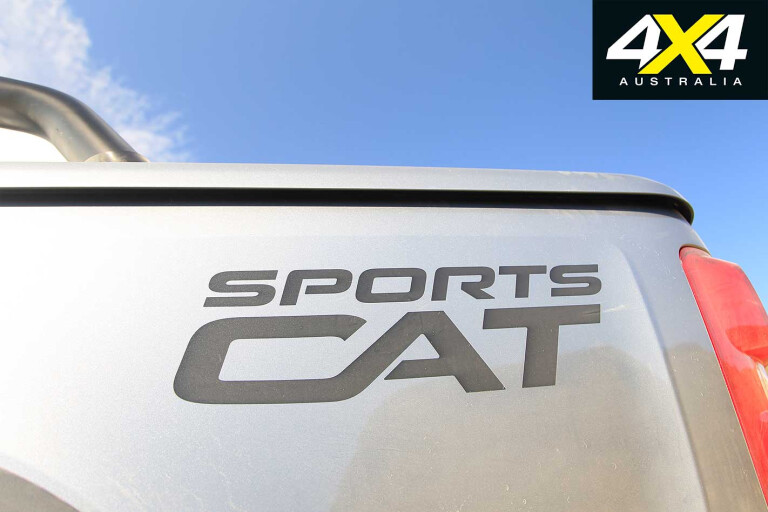
DUE TO the high proportion of off-road driving in this test the SportsCat returned a reasonably thirsty 14.5L/100km, which was a little better than the Raptor. When we tested a SportsCat+ it managed 12.2L/100 (with lower proportion of off-road driving).
The SportsCat comes with a hard tonneau complete with a quick-release system for easy removal; although, this requires at least two people. The soft-open tailgate is also a nice touch, while a load-restraint system and tub liner are both handy options. Finally, the SportsCat is rated at 3500kg (braked trailer), a full 1000kg more than the Raptor. It has a higher payload, too, than the Raptor.
HSV background
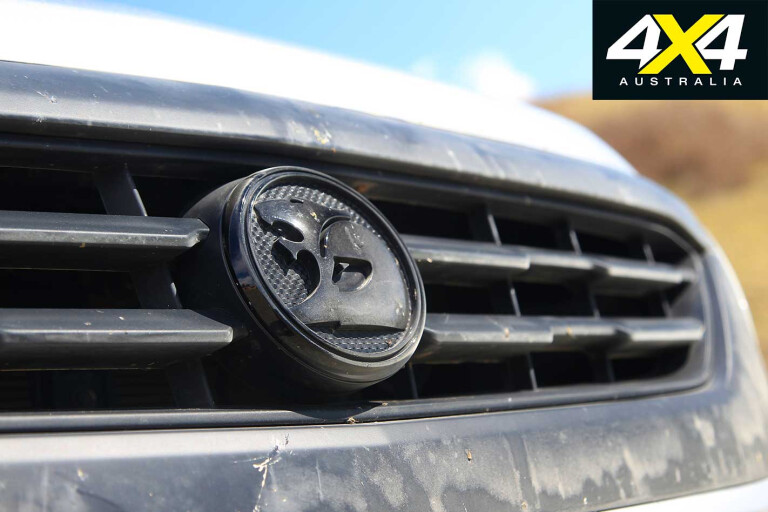
HOLDEN Special Vehicles (HSV) was founded in 1987 as a joint venture between Holden and Scottish racing driver, team owner and entrepreneur, the late Tom Walkinshaw, and remains today a partnership between Holden and Walkinshaw Performance.
HSV is best known for its expertise in tweaking Commodore V8s, but over the years has produced a wide range of models sold here under both HSV and Holden.
Export models have also been sold as a Vauxhall in the UK and elsewhere. HSV even produced its version of the Jackaroo 4x4. HSV also imports and sells the Chevrolet Silverado, with the right-hand conversion done at its Melbourne factory.
Ford Ranger Raptor - Ready to strike
Thanks to comprehensive re-engineering, Ford’s Raptor is a completely different beast than the standard Ranger.
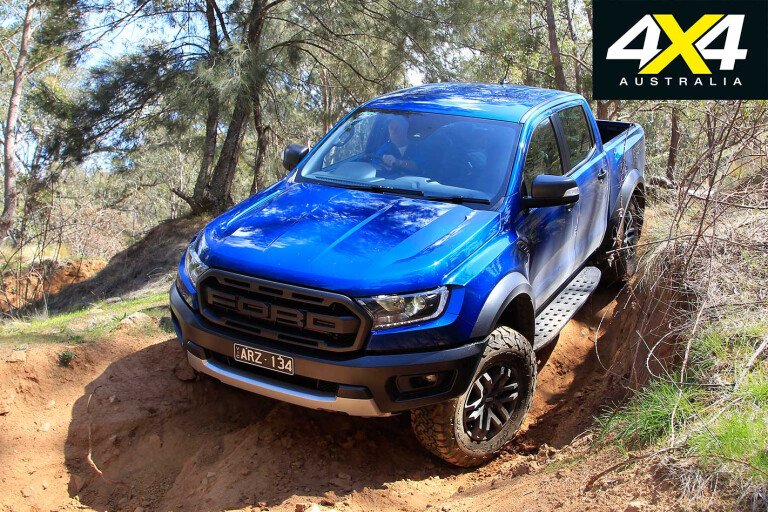
THE Ranger Raptor mightn’t be designed for off-road racing, but if you wanted to line up in an off road event like the Finke Desert Race or Australian Safari in a dead-stock vehicle, it’s hard to think of anything better on the market. It would certainly be a better bet than a stock Ranger or any standard 4x4 dual-cab thanks to its bespoke chassis engineering.
Chassis engineering is what the Raptor is all about, as the powertrain (aside from final drive gearing) is the same as what’s now available as an option in Ranger XLT and WildTrak 4x4 dual-cabs and in mid- and high-spec Everest models.
The powertrain in question comprises a 2.0-litre four-cylinder bi-turbo-diesel backed by a 10-speed automatic, the only gearbox on offer with this new engine.
Powertrain & Performance
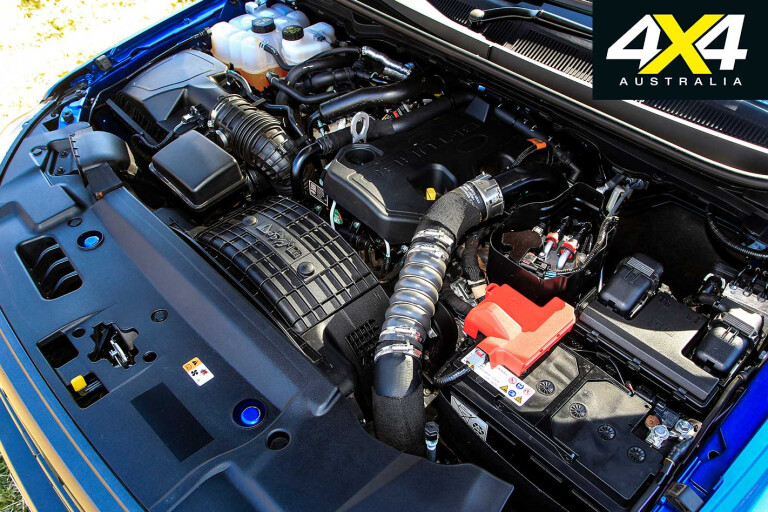
IF YOU think it’s a fair leap of faith from a 3.2-litre five-cylinder to a 2.0-litre four-cylinder, you’d be right.
The 3.2-litre engine is the biggest engine in any the mainstream utes, while the 2.0-litre four is the equal smallest. However, small in this case doesn’t mean less power, as the new 2.0-litre ups the ante on the 3.2-litre by 10kW and 30Nm to produce 157kW and 500Nm.
Much of the 2.0-litre’s ability to produce more power and torque than a 60-per-cent-bigger engine in the 3.2 can be put down to its sophisticated bi-turbo arrangement and equally sophisticated high-pressure fuel injection system. Both help generate far higher effective cylinder pressures, a fact borne out by the 2.0-litre’s 500Nm maximum torque being available from just 1750rpm, the same relatively low rpm as the 3.2 to achieve its 470Nm max.
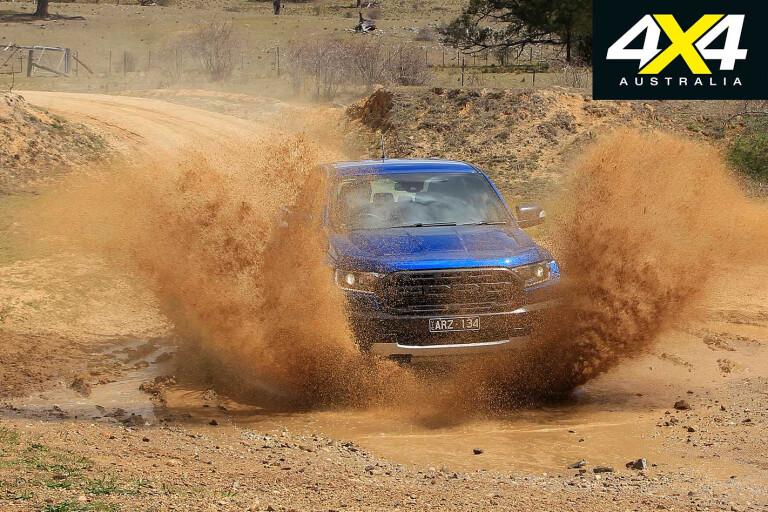
Not that the 2.0-litre in the Raptor produces tearaway performance, but it’s quicker than it feels thanks in part to the close ratios and seamlessly quick shifts of its 10-speed auto. Even though the Raptor is heavier than a 3.2-litre Ranger, it’s quicker to 100km/h by half a second.
On the highway the Raptor offers the same roll-on and overtaking performance as the SportsCat and, again, much of that can be put down to the 10-speed auto overcoming the fact the Raptor is heavier, wider and taller than the SportsCat.
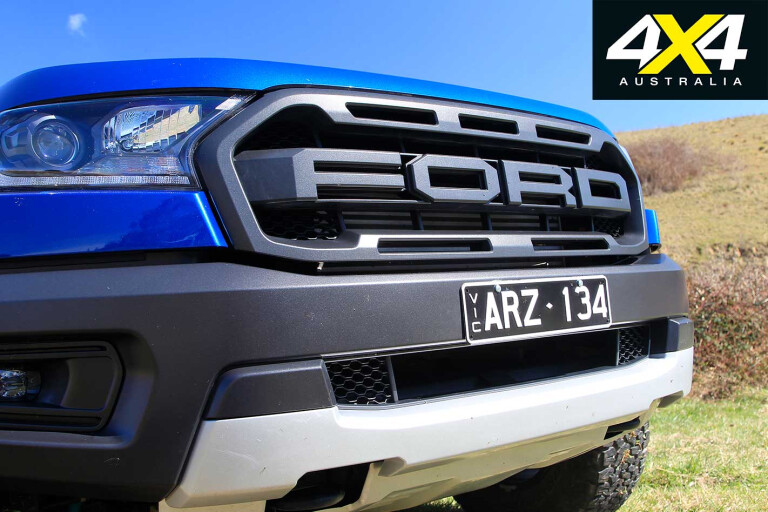
Interestingly, the effective top-gear ratios (taking into account top-gear, final-drive ratios, and tyre rolling circumference) of the Raptor and SportsCat are almost identical, which means the Raptor has 10 gears squeezed into the same ‘space’ as the six gears of the SportsCat.
However, the far more telling difference between the Raptor and SportsCat is the refinement of both the engine and gearbox: the Raptor is smoother, quieter and far more seamless in the way it delivers power.
On-road ride & Handling
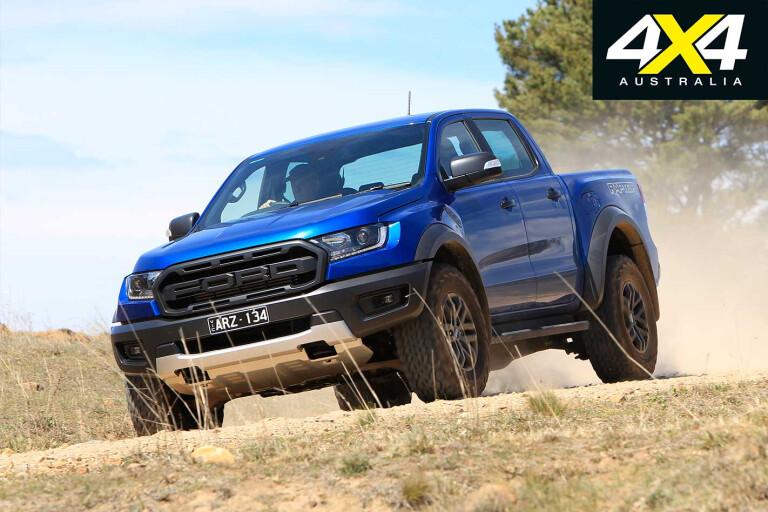
THE RAPTOR’S chassis has been significantly altered from the standard Ranger’s; the key changes being 150mm-wider front and rear tracks, 46mm more ground clearance, 30 per cent more suspension travel at both ends, coil springs at the rear, twin-tube Fox dampers (the rears have ‘piggy-back’ reservoirs), four-wheel disc brakes and 285/70 R17 BFGoodrich All Terrain tyres.
On the road the first thing you notice is how compliant and comfortable the Raptor’s ride is compared to either the SportsCat or a standard Ranger, due in part to the fact the Raptor’s rear suspension isn’t designed for heavy-duty towing so it can be more softly sprung.
The extra suspension travel, the taller tyre sidewalls and the fact the dampers are softer in the middle of their stroke than they are at the extremes of their travel all contribute to the supple ride.

On tight, winding bitumen roads the Raptor feels a little soft and imprecise compared to the SportsCat, but on fast, open roads, especially bumpy unsealed roads, it really starts to come into its own and is far more reassuring to drive than the SportsCat, which is still pretty handy in its own right.
The Raptor also offers various ‘Terrain Management’ settings that tweak the throttle mapping, the gearbox shifts protocols and the calibration of the stability and traction-control systems. It also has paddle shifters when the gearbox’s manual mode is selected.
Off-road

IF YOU think the Raptor is well-suited to high-speed, bumpy roads then you’ll really love it in gnarly off-road conditions. It’s here the extra clearance, generous wheel travel and big tyres start to work and combine to place the Raptor well ahead of the SportsCat, even if the latter is significantly better off-road than a stock Colorado.
If all that isn’t enough of an advantage for the Raptor, it also comes with a driver-switched rear locker that doesn’t negate the brake-force traction control across the front axle when engaged.
In terms of a stock, showroom-standard 4x4 ute, the Raptor is about as good as it gets in terms of hardcore off-road ability. Its off-road functionality is enhanced by heavy-duty recovery hooks front and rear, extra underbody protection and an impressive 850mm wading depth claim, some 250mm more than the SportsCat. That’s despite the engine’s air intake being under the bonnet lip, whereas the SportsCat’s intake is via the inner guard.
What's Watt?
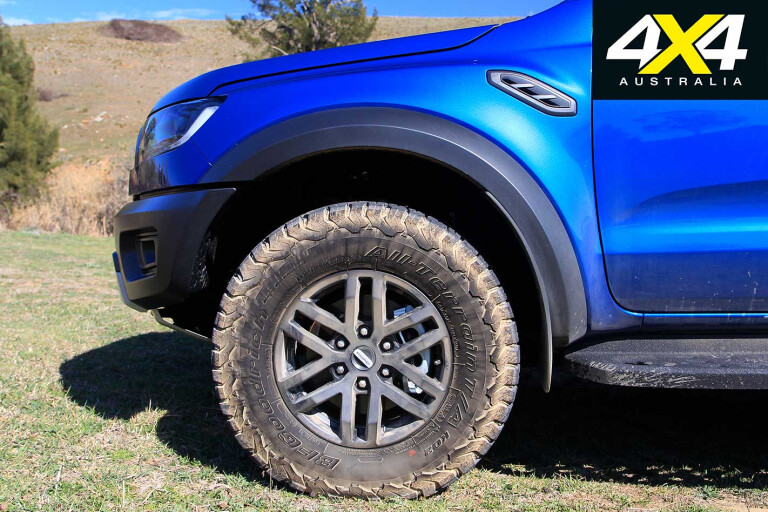
THE RAPTOR’S rear suspension arrangement is often described as a Watt’s linkage, but that’s a little misleading. The basic suspension arrangement is in fact a coil-sprung live axle, and the Watt’s linkage is just one element of the design.
Unlike the leaf springs of a standard Ranger that hold the rear axle in place (as well as providing springing), the Raptor’s coils only provide springing and can’t ‘locate’ the axle. To counter this, the fore-and-aft (or longitudinal) location is provided by four trailing arms, while the side-to-side (or lateral) location is provided by a Watt’s linkage.
With most coil-sprung live axles, the lateral location is provided by a Panhard rod and, while a Watt’s linkage and a Panhard rod do the basic same job, the Watt’s linkage allows vertical movement of the axle without the Panhard rod’s unwanted tendency to want to push the axle sideways as it moves up and down. T
he Watt’s linkage is named after James Watt, the 18th century Scottish engineer who lends his name to metric unit of power (the Watt) and is also regarded as the ‘father’ of the steam engine, even if he didn’t invent it.
Cabin & Accommodation
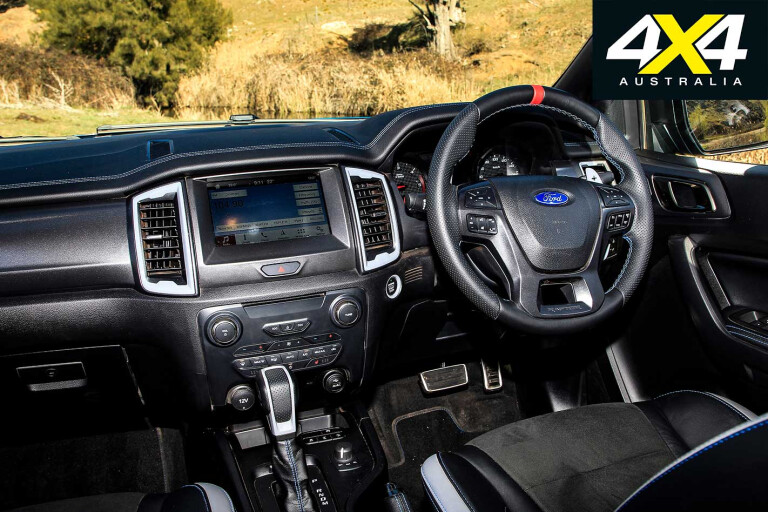
THE RAPTOR offers keyless entry and start, and it comes with leather and a nicely finished cabin; even though the symbols on many of the various buttons and switches could be easier to read. No steering-wheel reach for the driver, but the Raptor’s front sports-style seats are extra comfortable and, as always with a Ranger, the rear seat space is about as good as it gets with a dual-cab.
What you get

THE RAPTOR comes in one model and only as an automatic. Its long list of standard equipment includes keyless entry and start; six airbags; leather, heated front sports seats; electric seat adjust for the driver; paddle shifters; an 8.0-inch touchscreen; sat-nav; Apple CarPlay and Android Auto; a rear-view camera; auto headlights/wipers; auto stop-start fuel saving; dual-zone climate control; and a six-speaker audio system complete with a digital radio.
HID headlights, LED DRLs, LED foglights, a driver-switched rear locker, six-mode ‘Terrain Management’, lane-keep assist and warning, a 230-Volt outlet in rear of the centre console, and a towbar are also standard fare. The Raptor rides on 17-inch wheels with 33-inch BFGoodrich ATs and is priced from $74,990.
Practicalities
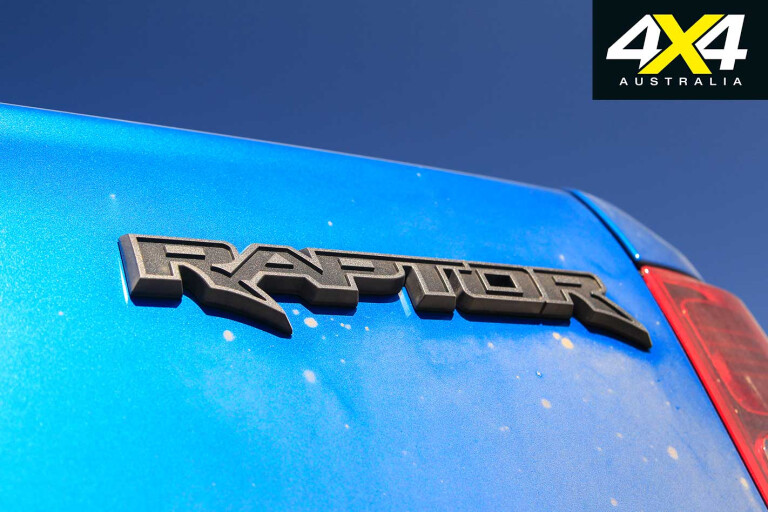
THE RAPTOR has 80 litres of fuel capacity (the SportsCat has 76 litres), but it proved to be a little thirstier on test (14.7L versus 14.5L/100km for the HSV), which pulls back some of its range advantage due to the bigger tank.
As mentioned, the Raptor isn’t designed for heavy-duty towing and drops 1000kg in rating over a standard Ranger and the SportsCat due to a lower GCM. It’s still rated to tow 2500kg and comes with a very neat integrated towbar as standard. Its 758kg payload, due to its lower GVM than a standard Ranger, is also down on most dual-cabs; although, like the 2500kg tow rating, is still pretty handy.
The Raptor’s rear tub has a 12-Volt outlet and a work light, and it’s the same dimensions as a stock Ranger so will take the same accessory hard tonneau covers, canopies or tub liners.
The Verdict - Showroom Stunners

IF YOU’RE a diehard Holden or a diehard Ford fan you don’t have to read any further ... you already know which of these utes takes your fancy. For the rest of us, there are convincing arguments for both.
Why would you buy a SportsCat? If you want a manual rather than an automatic, it’s the only choice. If you need to tow up to 3500kg, it’s also the only choice. If your idea of fun is hard driving on tight bitumen roads, then it’s the best choice.
If you don’t want to splash much cash you can get into a SportsCat auto for $12K less than a Raptor; if you want a manual you can save an additional $1200. Even the SportsCat+ which brings race-spec front brakes and an auto-decoupling rear sway bar – and optional SupaShock dampers – is $2400 less than a Raptor.

Why would you buy the Raptor? If off-road prowess is your priority, it’s clearly superior to the SportsCat. If you want a more comfortable ride at all times and superior composure at high speeds on rough roads, then the Raptor’s also the better choice.
Put simply, the Raptor’s breadth of on- and off-road performance is wider than that of the SportsCat, as it should be given the engineering changes are more significant when either are compared to their stock counterparts.
Finally, the Raptor’s powertrain and general running refinement is also superior to the SportsCat, which makes it nicer to drive on an everyday basis and not just when you’re going hard.
Specifications
| Ford Ranger Raptor | HSV Colorado SportsCat | ||
| Engine | 2.0-litre 4-cyl bi-turbo diesel | 2.8-litre 4-cyl turbo-diesel | |
| Power | 157kW @ 3750rpm | 147kW @ 3500rpm | |
| Torque | 500Nm @ 1750-2000rpm | 500Nm @ 2000rpm | |
| Gearbox | 10-speed automatic | 6-speed automatic | |
| 4x4 System | Dual-range part-time | ||
| Crawl Ratio | 47.6:1 | 36.4:1 | |
| Construction | Separate-chassis | ||
| Suspension (f) | Independent/coil springs | ||
| Suspension (r) | Live axle/coil springs | Live axle/leaf springs | |
| Wheel/Tyre Spec | LT285/70R17 (113/116 S) | 285/60R18 (120 S) | |
| Kerb Weight | 2332kg | 2250kg | |
| GVM | 3090kg | 3150kg | |
| Payload | 758kg | 900kg | |
| Towing Capacity | 2500kg | 3500kg | |
| GCM | 5350kg | 6300kg | |
| Departure angle | 24˚ | 24˚ | |
| Rampover angle | 24˚ | 27˚ | |
| Approach angle | 32.5˚ | 32˚ | |
| Wading Depth | 850mm | 600mm | |
| Ground Clearance | 283mm | 251mm | |
| Fuel Capacity | 80 litres | 76 litres | |
| ADR Fuel Claim | 8.2L/100km | 8.7L/100km | |
| Test Fuel Use | 14.7L/100km | 14.5L/100km | |

COMMENTS